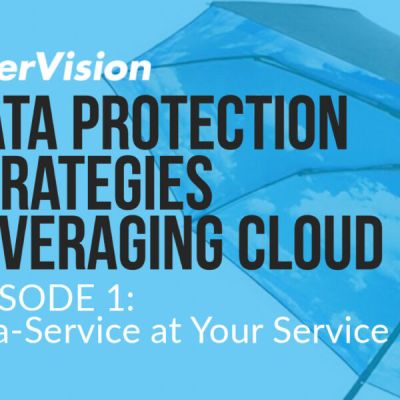With the list of possible disruptive events that can take a business offline growing in number year over year, it’s no surprise so many organizations’ leaders are now asking IT departments to strengthen their stance against these threats. But what role can DRaaS and the cloud play in ensuring this greater resiliency?
Disaster Recovery as a Service (DRaaS), like its cousin Backup as a Service (BaaS), provides technology to ensure business continuity, a target site and infrastructure, and the management of the process that it takes to ensure its success—all delivered to you as a service. The key for DRaaS is that the target site and infrastructure are in the cloud, rather than in a on-premises datacenter as a traditional DR solution might usually entail. The management is provided by a team of professionals who live and breathe DR and backups, which allows your IT staff to reallocate valuable time to business projects of greater daily importance.
For CIOs and other IT leaders who must demonstrate early cloud wins to help gain wider stakeholder buy-in needed for a full migration, Disaster Recovery as a Service (DRaaS) to AWS makes an ideal candidate for demonstrating that the cloud can be a successful driver for the business. It also encourages cloud-hesitant IT members to learn the ropes of the AWS environment in a non-production scenario.
A recovery time objective (RTO) means the time it takes to stand up the disrupted technology, but the problem is that it’s not True RTO.
Upon requesting the recovery, InterVision was able to bring up 40 terabytes of critical file servers and restore connectivity in their hosted recovery datacenter.
InterVision executed the DRaaS solution to AWS, then tested it for verification. It has given them confidence in recovery, freed up their IT team to focus on other priorities, and has enabled the ability to scale as the company grows.
Deciding which target or targets are right for your DRaaS strategy can be complex. Some of the factors end up being tradeoffs, speed vs. cost.
By taking the time to truly understand their business needs, service level requirements, and challenges, InterVision impressed the company. They appreciated our approach in looking at things strategically vs. tactically, especially our focus on a holistic perspective which helped to clearly translate issues for the executive and board room level.
InterVision has compiled a list our 7 best IT disaster recovery (IT-DR) resources, in no particular order. We think they are the best starting point for building a strong IT resiliency strategy that both emphasizes data protection and fast recovery for a wide swathe of disruptions.
As a result, the firm established a successful DR testing strategy to ensure systems availability across multiple threats. They also gained the ability to meet regulatory requirements for their financial service clients and increased partner confidence in their firm’s recovery capability. With InterVision managing the full solution, the IT team was able to focus on other priorities within the firm.














